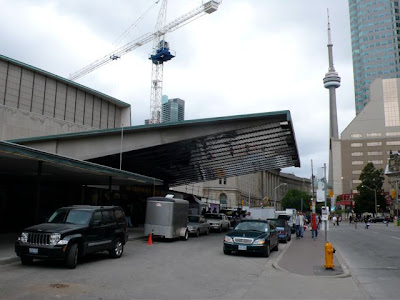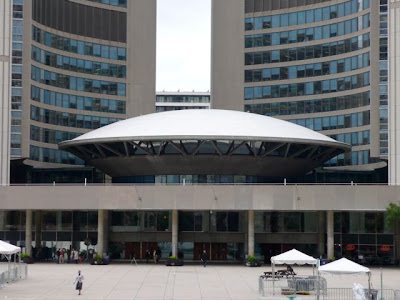The Terry Fox Memorial at BC Place is slated for demolition.
As part of the revitalization of BC Place, PavCo will dismantle the memorial in order to redesign the plaza and to make way for construction cranes that are building the new stadium roof.
There is much debate around this move–the Franklin Allen-designed memorial has long perplexed Vancouverites who have found it difficult to reconcile the design with the spirit of the man it is meant to celebrate. Its post-modern aesthetics have not helped the cause.
And yet it is a design firmly rooted in its era and one chosen by a committee that included Arthur Erickson and Abraham Rogatnick. It would be interesting to hear their comments, however both passed away last year. Despite its unpopularity, some kind of preservation plan through relocation might be worthwhile, if only as a curious part of our history.
The upside is that, at the suggestion of the Fox family, Douglas Coupland has been commissioned to design a new monument. It's hard to think of someone better suited to memorialize one of our great Canadians.













